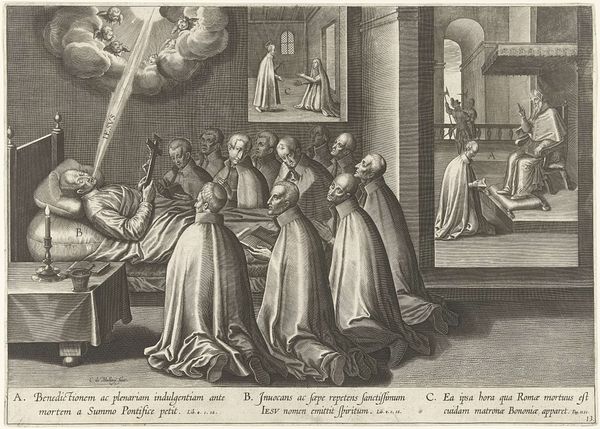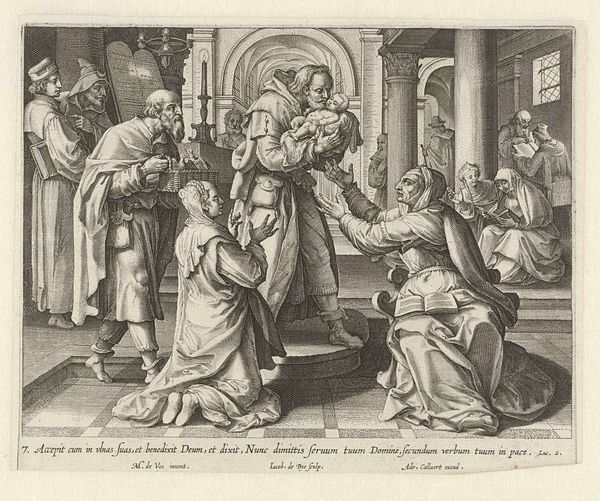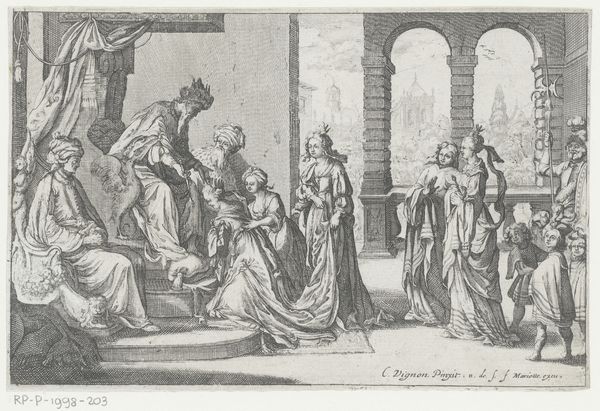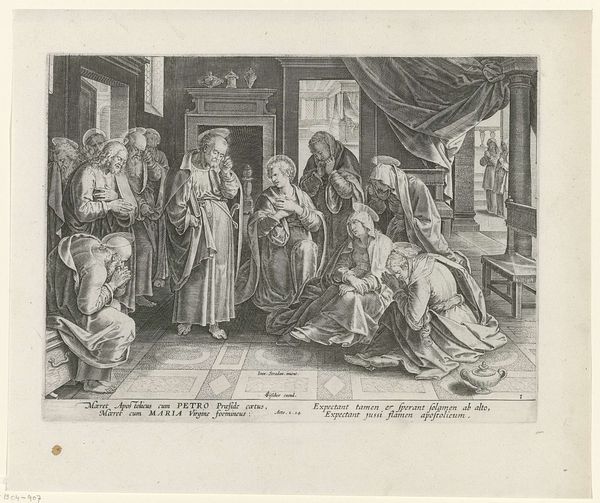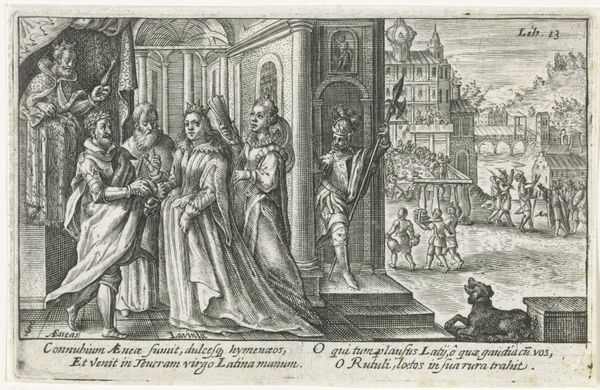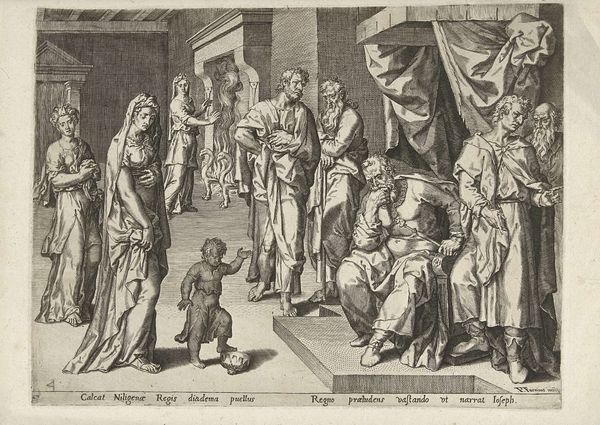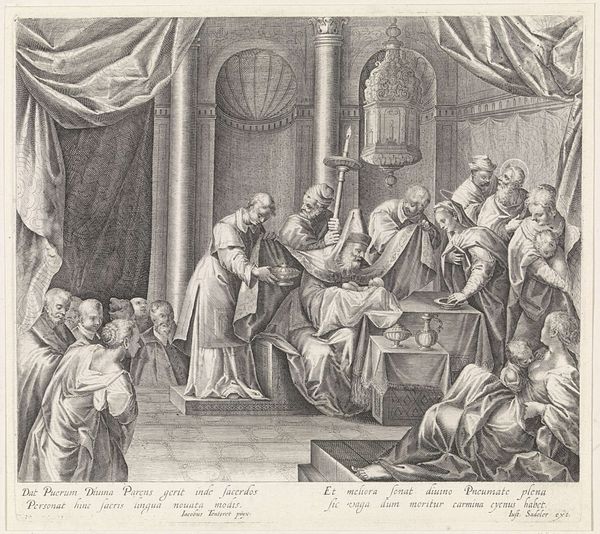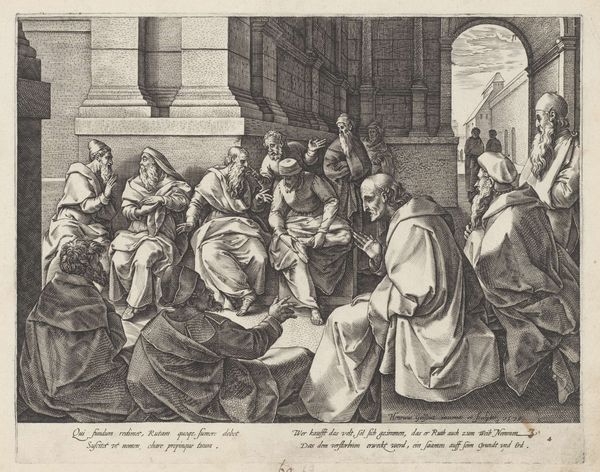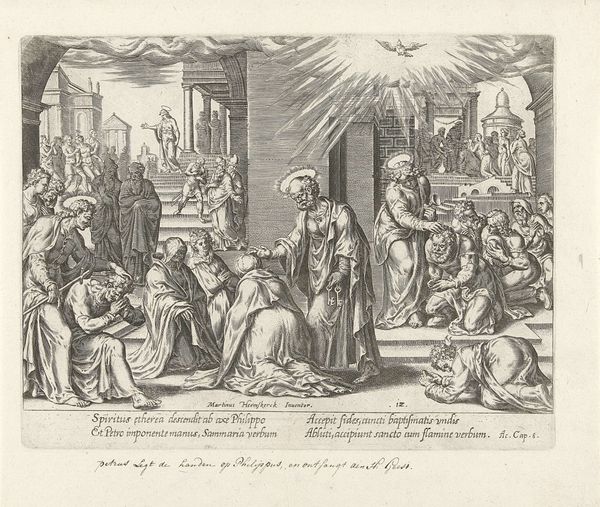
print, engraving
#
baroque
# print
#
old engraving style
#
figuration
#
history-painting
#
engraving
Dimensions: height 225 mm, width 275 mm
Copyright: Rijks Museum: Open Domain
Editor: This is Cornelis Galle I’s “Visitatie,” an engraving dating to around 1620-1625. It feels like a stage production, almost theatrical, with figures posed and framed by these strong architectural elements. What stands out to you? Curator: The theatricality isn't accidental. Consider how printmaking circulated imagery during this era. Galle wasn’t just depicting a biblical scene, he was also producing a commodity within a complex market. Think about the Counter-Reformation's emphasis on visually reinforcing doctrine. How might an image like this serve that purpose? Editor: So, this wasn't just art for art's sake. It was actually part of a bigger campaign to, I guess, reinforce religious ideas and show devotion in response to the Reformation? Curator: Exactly. And the setting! It’s not simply a neutral backdrop, but an idealized, almost grand setting. By placing the event in a space reminiscent of Roman architecture, Galle is elevating it, associating the story with the authority and prestige of the Roman Empire and by extension the church. Do you think this association resonated with its intended audience? Editor: Definitely. The architectural setting lends the figures gravitas. Also, placing it within a recognizable Roman context almost says, “This history is our history too." Curator: Precisely. And it invited viewers into a shared visual language steeped in cultural and religious meaning, reinforcing a sense of belonging and shared identity at a time when religious identity was a contentious political issue. It's quite calculated, really. Editor: That’s fascinating. I never considered how political printmaking could be. Now I realize there's more here than just religious art. Curator: Indeed. It shows us that art in the public sphere has always been a tool – and a reflection – of broader social and political forces. The engraving makes me see familiar stories from a different point of view. Editor: Right, considering its historical and political role opens up whole new avenues of interpretation.
Comments
No comments
Be the first to comment and join the conversation on the ultimate creative platform.
